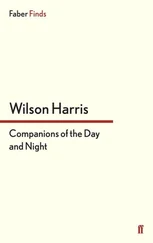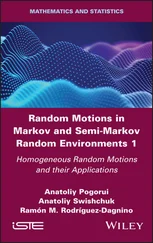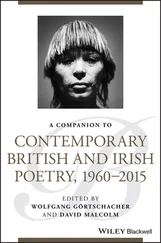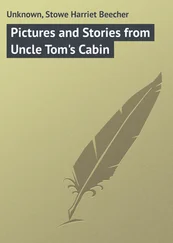A Companion to Motion Pictures and Public Value
Здесь есть возможность читать онлайн «A Companion to Motion Pictures and Public Value» — ознакомительный отрывок электронной книги совершенно бесплатно, а после прочтения отрывка купить полную версию. В некоторых случаях можно слушать аудио, скачать через торрент в формате fb2 и присутствует краткое содержание. Жанр: unrecognised, на английском языке. Описание произведения, (предисловие) а так же отзывы посетителей доступны на портале библиотеки ЛибКат.
- Название:A Companion to Motion Pictures and Public Value
- Автор:
- Жанр:
- Год:неизвестен
- ISBN:нет данных
- Рейтинг книги:3 / 5. Голосов: 1
-
Избранное:Добавить в избранное
- Отзывы:
-
Ваша оценка:
- 60
- 1
- 2
- 3
- 4
- 5
A Companion to Motion Pictures and Public Value: краткое содержание, описание и аннотация
Предлагаем к чтению аннотацию, описание, краткое содержание или предисловие (зависит от того, что написал сам автор книги «A Companion to Motion Pictures and Public Value»). Если вы не нашли необходимую информацию о книге — напишите в комментариях, мы постараемся отыскать её.
A Companion to Motion Pictures and Public Value
Companion
A Companion to Motion Pictures and Public Value
A Companion to Motion Pictures and Public Value — читать онлайн ознакомительный отрывок
Ниже представлен текст книги, разбитый по страницам. Система сохранения места последней прочитанной страницы, позволяет с удобством читать онлайн бесплатно книгу «A Companion to Motion Pictures and Public Value», без необходимости каждый раз заново искать на чём Вы остановились. Поставьте закладку, и сможете в любой момент перейти на страницу, на которой закончили чтение.
Интервал:
Закладка:
References
1 Bacharach, Sondra, and Deborah Tollefsen. 2010. “We Did It: From Mere Contributors to Co-authors.” Journal of Aesthetics & Art Criticism 68 (1): 23–32. https://www.jstor.org/stable/25622120.
2 Barrett, Louise. 2011. Beyond the Brain: How Body and Environment Shape Animal and Human Minds. Princeton, NJ: Princeton University Press.
3 Blake, Elissa. 2011. “A Theatrical Masterclass.” The Sydney Morning Herald, November 12.
4 Boden, Margaret A. 2010. Creativity and Art: Three Roads to Surprise, Oxford: Oxford University Press.
5 Byrne, David. 2017. How Music Works. New York: Three Rivers Press.
6 Chatman, Seymour. 2005. “The Cinematic Narrator.” In The Philosophy of Film: Introductory Text and Readings, edited by Thomas Wartenberg and Angela Curran, 190–197. London and Malden, MA: Blackwell Publishing.
7 Clark, Andy. 1997. Being There: Putting Brain, Body, and World Together Again. Cambridge, MA: MIT Press.
8 Clarke, Eric F., and Mark Doffman, eds. 2017. Distributed Creativity: Collaboration and Improvisation in Contemporary Music. New York: Oxford University Press.
9 Colombetti, Giovanna, and Joel Krueger. 2015. “Scaffoldings of the Affective Mind.” Philosophical Psychology 28 (8): 1157–1176. https://doi.org/10.1080/09515089.2014.97634.
10 Dyshlyuk, Liubov. 2016. “Esfir Shub.” Edited by Anastasia Kostina. Feminist Media Histories 2 (3): 11–28. https://doi.org/10.1525/fmh.2016.2.3.11.
11 Gadassik, Alla. 2018. “Ėsfir’ Shub on Women in the Editing Room: ‘The Work of Montazhnitsy’ (1927).” Apparatus. Film, Media and Digital Cultures of Central and Eastern Europe 6. https://doi.org/10.17892/app.2018.0006.125.
12 Gaines, Jane, and Radha Vatsal. 2011. “How Women Worked in the US Silent Film Industry.” In Women Film Pioneers Project, edited by Jane Gaines, Radha Vatsal and Monica Dall’Asta. New York: Center for Digital Research and Scholarship, Columbia University.
13 Gaut, Berys. 1997. “Film Authorship and Collaboration.” In Film Theory and Philosophy, edited by Richard Allen and Murray Smith, 149–172. New York: Oxford University Press.
14 Gerstner, David A., and Janet Staiger, eds. 2003. Authorship and Film. New York: Routledge.
15 Harcourt, Edward. 2016. “Moral Emotion, Autonomy and the ‘Extended Mind.’” Phenomenology and Mind 11: 100–112. https://doi.org/10.13128/Phe_Mi-20110.
16 Hatch, Kristen. 2013. “Cutting Women: Margaret Booth and Hollywood’s Pioneering Female Film Editors, When an Editor Was a Cutter.” In Women Film Pioneers Project, edited by Jane Gaines, Radha Vatsal and Monica Dall’Asta, 1–9. New York: Center for Digital Research and Scholarship, Columbia University.
17 Haugeland, John. 1998. “Mind Embodied and Embedded.” In Having Thought: Essays in the Metaphysics of Mind, edited by John Haugeland, 207–237. Cambridge, MA: Harvard University Press.
18 Hutchins, Edwin. 1995. Cognition in the Wild. Cambridge, MA and London, England: MIT Press.
19 . 2010. “Cognitive Ecology.” Topics in Cognitive Science 2 (4): 705–715. https://doi.org/10.1111/j.1756-8765.2010.01089.x.
20 Kaganovsky, Lilya. 2018. “Film Editing as Women’s Work: Ėsfir’ Shub, Elizaveta Svilova, and the Culture of Soviet Montage.” Apparatus Film, Media and Digital Cultures of Central and Eastern Europe 6: 1–20. https://doi.org/10.17892/app.2018.0006.114.
21 Kerrigan, Susan, and Phillip McIntyre. 2019. “Creative Filmmaking Processes, Procedures and Practices: Embodied and Internalized Filmmaking Agency.” In The Palgrave Handbook of Screen Production, edited by Craig Batty, Marsha Berry, Kath Dooley, Bettina Frankham, and Susan Kerrigan, 3–17. Cham: Palgrave MacMillan. https://doi.org/10.1007/978-3-030-21744-0_1.
22 Lauzen, Martha M. 2019. “The Celluloid Ceiling: Behind-the-Scenes Employment of Women on the Top 100, 250, and 500 Films of 2019.” https://womenintvfilm.sdsu.edu/the-celluloid-ceiling-behind-the-scenes-employment-of-women-on-the-top-100-250-and-500-films-of-2019.
23 Livingston, Paisley. 2011. “On Authorship and Collaboration.” The Journal of Aesthetics and Art Criticism 69 (2): 221–225. https://doi.org/10.1111/j.1540-6245.2011.01463.x.
24 Malinin, Laura H. 2019. “How Radical Is Embodied Creativity? Implications of 4E Approaches for Creativity Research and Teaching.” Frontiers in Psychology 10: 1–12. https://doi.org/10.3389/fpsyg.2019.02372.
25 Meskin, Aaron. 2008. “Authorship.” In The Routledge Companion to Philosophy and Film, edited by Paisley Livingston and Carl Plantinga. London: Routledge. https://doi.org/10.4324/9780203879320.ch2.
26 Meuel, David. 2016. Women Film Editors: Unseen Artists of American Cinema. Jefferson, NC: McFarland, Incorporated, Publishers.
27 Mulvey, Laura. 2015. “Women Making History: Gleaning and the Compilation Film.” In Where Is History Today?: New Ways of Representing the Past, edited by Marcel Arbeit and Ian Christie, 27–38. Olomouc: Palacký University Olomouc.
28 Newen, Albert, Leon De Bruin, and Shaun Gallagher, eds. 2018. The Oxford Handbook of 4E Cognition. Oxford: Oxford University Press.
29 Oldham, Gabriella. 1992. First Cut: Conversations with Film Editors. Los Angeles, CA: University of California Press.
30 . 2012. First Cut: More Conversations with Film Editors. Los Angeles, CA: University of California Press.
31 Pearlman, Karen. 2016. Cutting Rhythms: Intuitive Film Editing. Burlington, MA: Focal Press.
32 . 2017. “Editing and Cognition Beyond Continuity.” Projections: Journal of Movies and Mind 11 (2): 67–86. https://doi.org/10.3167/proj.2017.110205.
33 . Pearlman, Karen and Jane Gaines 2019. “After the Facts.” [In]transition: Journal of Videographic Film & Moving Image Studies 6 (4). http://mediacommons.org/intransition/after-facts.
34 ., and Adelheid Heftberger. 2018. “Editorial: Recognising Women’s Work as Creative Work.” Apparatus. Film, Media and Digital Cultures of Central and Eastern Europe (6). http://dx.doi.org/10.17892/app.2018.0006.124.
35 ., John MacKay, and John Sutton. 2018. “Creative Editing: Svilova and Vertov’s Distributed Cognition.” Apparatus. Film, Media and Digital Cultures of Central and Eastern Europe (6). http://dx.doi.org/10.17892/app.2018.0006.122.
36 Petric, Vlada. 1978. “Esther Shub: Cinema Is My Life.” Quarterly Review of Film Studies 3 (4): 429–448. https://doi.org/10.1080/10509207809391417.
37 Polan, Dana. 2001. “Auteur Desire.” Screening the Past 12: 1–9. http://www.screeningthepast.com/2014/12/auteur-desire.
38 Preston, Beth. 2013. A Philosophy of Material Culture: Action, Function, and Mind. London: Routledge.
39 Rietveld, Erik, and Julian Kiverstein. 2014. “A Rich Landscape of Affordances.” Ecological Psychology 26 (4): 325–352. https://doi.org/10.1080/10407413.2014.958035.
40 Sawyer, Keith R., and Stacy DeZutter. 2009. “Distributed Creativity: How Collective Creations Emerge from Collaboration.” Psychology of Aesthetics, Creativity, and the Arts 3 (2): 81–92. https://doi.org/10.1037/a0013282.
41 Smith, Tim J. 2012. “The Attentional Theory of Cinematic Continuity.” Projections: The Journal for Movies and Mind 6 (1): 1–27. https://doi.org/10.3167/proj.2012.060102.
42 Stollery, Martin. 2002. “Eisenstein, Shub and The Gender of the Author as Producer.” Film History 14 (1): 87–99. https://www.jstor.org/stable/3815583.
43 Sutton, John. 2009. “The Feel of the World’: Exograms, Habits, and the Confusion of Types of Memory.” In Memento, edited by Andrew Kania, 65–86. New York: Routledge.
44 . 2010. “Exograms and Interdisciplinarity: History, the Extended Mind, and the Civilizing Process.” In The Extended Mind, edited by Richard Menary, 189–225. Cambridge, MA: MIT Press.
Читать дальшеИнтервал:
Закладка:
Похожие книги на «A Companion to Motion Pictures and Public Value»
Представляем Вашему вниманию похожие книги на «A Companion to Motion Pictures and Public Value» списком для выбора. Мы отобрали схожую по названию и смыслу литературу в надежде предоставить читателям больше вариантов отыскать новые, интересные, ещё непрочитанные произведения.
Обсуждение, отзывы о книге «A Companion to Motion Pictures and Public Value» и просто собственные мнения читателей. Оставьте ваши комментарии, напишите, что Вы думаете о произведении, его смысле или главных героях. Укажите что конкретно понравилось, а что нет, и почему Вы так считаете.












